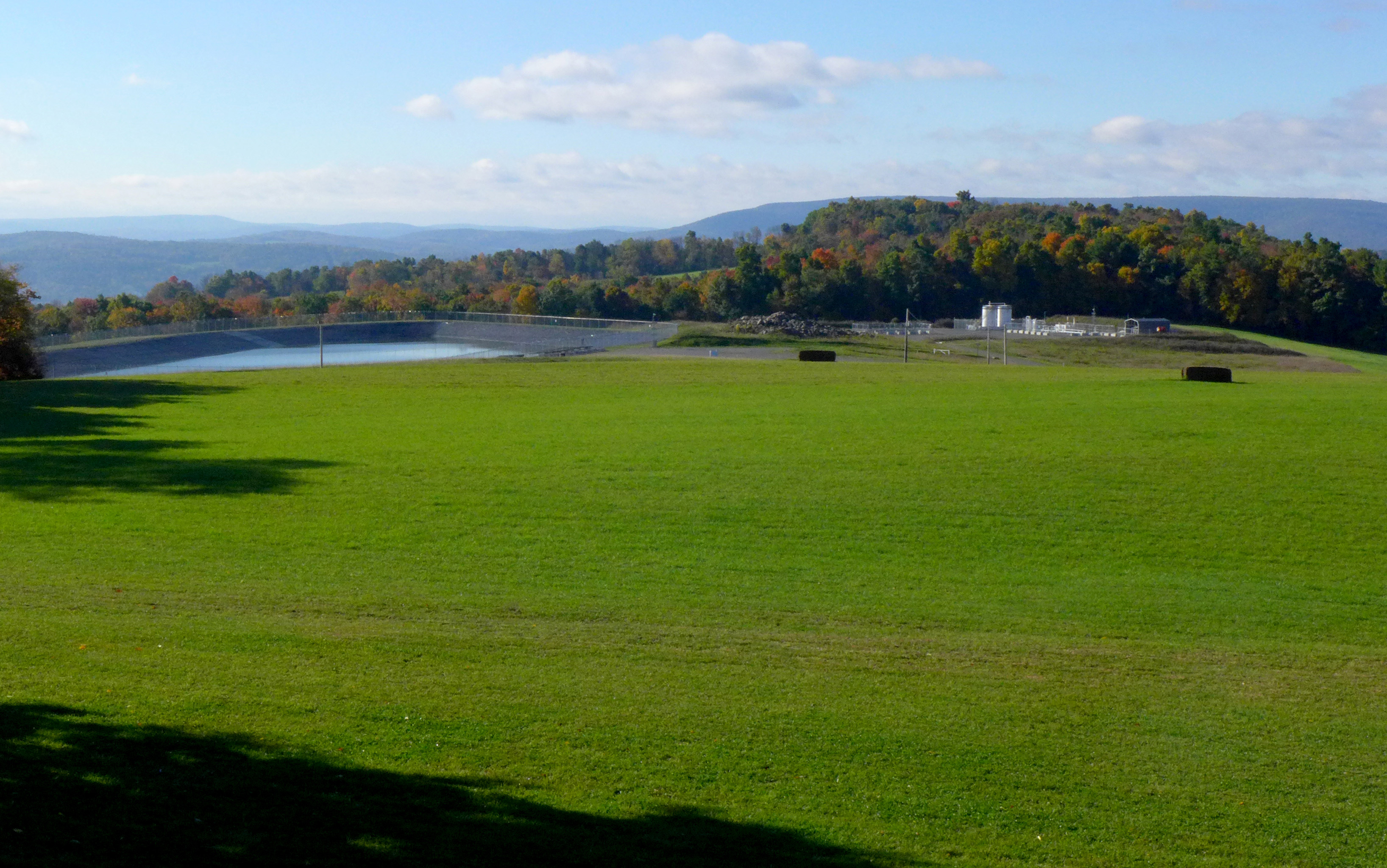If you’re looking for the shale gas boom, northeastern Pennsylvania is the place to start.
The Marcellus is the largest and fastest growing shale gas play in the U.S. and more than half of its 50 most productive wells were drilled in Susquehanna County in the northeast. Susquehanna and neighboring Bradford County produced 41 percent of all Marcellus gas this June.
While drilling is down in other shale gas plays across the US, with major oil companies selling off their stakes and CEO‘s expressing regret for buying in, the Marcellus has bucked some of the downward trends so far.
A recent report from the Post Carbon Institute, “Drilling Deeper: A Reality Check on U.S. Government Forecasts for a Lasting Tight Oil and Shale Gas Boom,” has grave warnings about the Energy Information Administration’s figures nationwide, concluding that two-fifths of the shale gas the agency expects to be produced between now and 2040 will likely never materialize. While many high-profile shale gas plays have already peaked in terms of gas production per well, the Marcellus appears to be an outlier in terms of productivity, researcher David Hughes concludes.
Enormous amounts of shale gas are being produced in Pennsylvania. In the first six months of this year, drillers here pumped 2 trillion cubic feet of gas. And much of this gas came from the Marcellus shale’s twin sweet spots, in the Northeast and Southwest corners of the state.
In the whirlwind of activity, some locals in here struck it rich – those who owned large tracts of land and negotiated their deals at exactly the right moment. Driving through the county, it seems like every back road has a red-and-white permit sign marking a shale gas well, a water impoundment, or other Marcellus-related infrastructure.
New drilling sites are a common sight in northeast Pennsylvania’s Marcellus shale region. © 2014 Laura Evangelisto
Expectations ran high when the boom first began. In 2010, 60 Minutes introduced a new word to the national media – “shale-ionaires,” or landowners who made millions simply by leasing their land for drilling.
“Once a well is built and producing, royalty checks start popping up in the mailbox,” explained 60 Minutes anchor Leslye Stahl. “It can last years and add up to many more millions.”
But even in the most productive shale play in the country, these early hopes have often been dashed, with some landowners reporting that leasing has already wound up costing them money.
In Litchfield Township, Glenn Aikens, a member of the Bradford County Planning Commission, also has three shale gas wells on his land. Signing a lease brought a host of unexpected costs, Aikens says : $22,000 to set up an L.L.C. to make sure that his children could inherit the farm’s suddenly valuable acreage in spite of estate taxes, pre-drilling water testing for the farm’s seven wells (“He charged me $14,500 dollars, but I wouldn’t have had a leg to stand on had I not,” says Aikens. “If they ruin the water, what do I do with this farm?”), and perhaps most painfully, the permanent loss of a valuable tax credit for farmland, now that the leased land is considered commercial property instead. Land that was assessed at $500 an acre was now assessed at $2,500 – and taxes were due retroactively.
Litchfield Township’s Glenn Aikens was paid $0.10 in royalties by a division of Chesapeake Energy, after the company deducted costs from his royalty check. © 2014 Laura Evangelisto
Aikens pulls a tattered photocopy of a ten cent check from his wallet, emblazoned with the logo of a division of Chesapeake Energy. It’s the royalty check for the gas produced on his 359 acre farm, after post-production expenses were deducted from the check. Under state law, property owners are supposed to be guaranteed a minimum of 12.5 percent of the value of the gas produced on their land, but a 2010 state Supreme Court ruling opened up a loophole. Gas companies started deducting a broad variety of costs – at times retroactively.
“I signed a contract and I’ll live by it, but I want my 12.5 percent,” said Aikens. “It’s been an ongoing battle with them and not getting paid.”
Even without post-production deductions, many landowners have found that oil wealth falls far short of the millions they first hoped. Property owners in the U.S. get an average of less than $500 a month from oil and gas wells that have been drilled on their property, David Sikes, a past president of the National Association of Royalty Owners, told the Wall Street Journal.
For Aikens, the calculations are unforgiving.
“It really wasn’t worth it,” Aikens says about his own lease.
The boom has brought other hidden costs, not only environmental but also economic for Northeastern Pennsylvania’s counties and their residents.
“Most people are still poor, most people are still struggling,” explained Vera Scroggins, an opponent of fracking from Susquehanna County, adding that even large landowners “complain to me privately, ‘people think we’re millionaires, but we’re not.”
© 2014 Laura Evangelisto
Driving down the streets of Montrose, PA (popualtion 1,500), Scroggins points out what’s changed (a new hotel, the warehouse for an oilfield services company) and what hasn’t – the empty store fronts, the “for rent” and “for sale” signs.
© 2014 Laura Evangelisto
There is some new construction in the area, to be sure. One of Susquehanna county’s new buildings is Cabot Oil and Gas’s corporate offices, a 24,000 square-foot office building with a workman’s green ladder still leaning against the sign and a stone wall made of rock slabs still on their pallets.
Cabot Oil & Gas’s newest headquarters, just a stone’s throw from Carter Road in Dimock, Pennsylvania. © 2014 Laura Evangelisto
The construction is one of the most visible signs of economic prosperity in the area – aside from the shale field itself, the well pads, water impoundments, pipeline construction sites and various locked driveways bearing red-and-white permit signs.
Cabot’s offices now sit less than a few miles away from the entrance to Carter Road in Dimock – a backroad now internationally known for its costly battles over water contamination.
On Carter Road, you’ll find some of the most notorious costs of the shale gas rush. A turn down Carter brings you to the home of Ray Kemble, a biker and the owner of a repair shop.
Kemble holds up two jugs of water he says came from his water well after Cabot started fracking. The first, a brown gallon container; the newest, dated 1-1-14, contains an ecto-cooler green liquid. “We got every color of the rainbow,” Kemble says describing the water his well now produces. Last July, a leaked EPA presentation tied the contamination in Dimock to drilling and fracking, but the agency’s official investigation remains underway.
Kemble seems to have little time for questions about the economics – he alludes briefly to health ailments he suspects could possibly be tied to contaminated water or air or his years working as a trucker for the shale industry. Pressed to talk money, Kemble says that his girlfriend signed a lease with Cabot over his strenuous objections and that the thousands of dollars in royalties every month promised had quickly dwindled.
The first check, he estimates, might have been for about $3,000, the final one for $58 – and then, with the wells cut off because of the contamination, the royalties stopped altogether.
Ray Kemble has been right in the middle of the fray over contaminated drinking water in his home town of Dimock. © 2014 Laura Evangelisto
But some in the region maintain there’s no connection between fracking and water contamination. Doug McLinko, a Bradford County Commissioner and a staunch (“100 percent a shale gas guy,” he introduces himself) supporter of what he calls “safe and responsible development” says that the industry has a strong track record.
Asked about the possibility of a shale gas bust, he’s dismissive. “That’s such baloney,” he says. There may be some “peaks and valleys,” he admits, but even when the industry pulls up stakes, they won’t be gone completely, he argues. There’ll be guys to check the wells, to maintain the pipelines, to do various other jobs.
But in the oil industry, busts can be sudden and dramatic. Take, for example, what happened in Rifle, Colorado in the early 1980’s.
“The industry made incredible projections—15 million barrels of oil a day for 200 years,” economist Pete Morton told Audubon Magazine. “But it didn’t consider the cost of getting it out of the ground or the cost to the environment. People built all these houses and infrastructure, passed bonds for roads and sewers. And two weeks after Exxon pulled out of Rifle, Colorado, on Black Sunday [May 2, 1981], 10,000 people were unemployed.”
From McLinko’s own home in Wysox, PA, you can see the Endless Mountains range and the Susquehanna River. Several deer spend their days in the field behind his home, and bear occasionally make visits. His dog dashes around underfoot as McLinko shows the high-tech wood-burning furnace with which he heats his own home.
The area has seen a falloff in tourism, he admits, due to concern over the impact of fracking on the rustic landscape that draws visitors from Philadelphia and New York City. But to McLinko, the concern about fracking ruining scenic vistas are overblown and shale wellpads blend away into the scenery.
© 2014 Laura Evangelisto
McLinko stops his truck in the middle of his own front lawn, showing the majestic view – the ridgetops of the Endless Mountain region, the fall foliage just beginning to turn the mountainsides yellow and red.
As he gestures at the landscape, his arm waves over at least four or five multi-acre well pads, among the 1,071 producing shale gas in Bradford County.
“I challenge you, where’s the scarring and devastation in that beautiful scenery,” he says. “Where is it?”
Bradford County Commissioner Doug McLinko steps out his front door everyday and sees the idyllic rolling mountains of Northeastern Pennsylvania. But in his own yard patches of those hills are replaced by well pads and water impoundments. © 2014 Laura Evangelisto
At the bottom of his yard stretches a massive black-lined freshwater impoundment pit next to the shale gas well at the foot of his property, just across the road. Two tall white tanks sit next to the gravel-edged pit, both on a multi-acre well pad. But McLinko looks past it all, seeing nothing.
Of course, in the shale field, it’s not the pockmarked vistas, but the things that no one can see that impose the highest costs.
In Craig Steven’s family home in Silver Lake Township, the tap water runs clear.
But next to the kitchen sink sits a thick blue tank, holding up to 5 gallons of potable water, to replace the well water that’s gone bad, with fracking the suspected cause. There’s no visible sign that the water is dangerous, but Stevens warns against even brushing your teeth with water from the tap.
Rebecca Roter, in neighboring Brooklyn, PA, is one of the most recent landowners to discover her water’s gone bad. A long-time environmentalist, Roter has called for more regulation of air emissions from the shale gas industry. Stats about compressor stations and federal laws fall easily off her tongue. But it was earlier this year that the water tests for her own home came back, showing it was contaminated, she says.
“If I can get what the house was valued at before it depreciated, then maybe I should do that,” said Roter as she contemplates the possibility of selling her home along with its mineral rights. “So basically, not everybody makes a ton of money is what I’m trying to say.”
Worries over the safety of her drinking water force Rebecca Roter to have fresh water brought in each week to her home. © 2014 Laura Evangelisto
Subscribe to our newsletter
Stay up to date with DeSmog news and alerts












